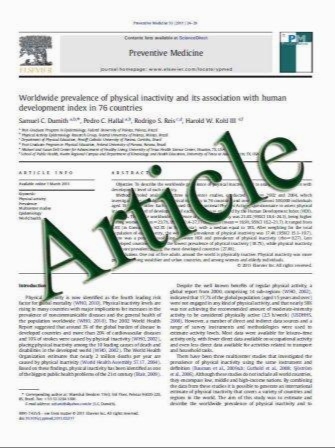Association of CSF Biomarkers and Secondary Insults Following Severe Traumatic Brain Injury
- نوع فایل : کتاب
- زبان : انگلیسی
- مؤلف : Deborah M. Stein • Joseph A. Kufera • Allison Lindell • Karen R. Murdock • Jay Menaker • Grant V. Bochicchio • Bizhan Aarabi • Thomas M. Scalea
- چاپ و سال / کشور: 2011
Description
Background Management of severe traumatic brain injury (TBI) focuses on mitigating secondary insults. There are a number of biomarkers that are thought to play a part in secondary injury following severe TBI. Two of these, S100b and neuron-specific enolase (NSE), have been extensively studied in the setting of neurological injury. This pilot study was undertaken to investigate the relationship of S100b and NSE to clinical markers of severity and poor outcome: intracranial hypertension (ICH), and cerebral hypoperfusion (CH). Methods Patients at the R Adams Cowley Shock Trauma Center were prospectively enrolled over an 18-month period. Inclusion criteria were: age > 18, admission within the first 6 h after injury, Glasgow Coma Scale (GCS) < 9 on admission, isolated TBI, and placement of an intraventricular catheter (IVC). Patients were managed according to an institutional protocol based on the Brain Trauma Foundation Guidelines. CSF was collected from the IVC on admission and twice daily for 7 days. S100b and NSE levels were analyzed by ELISA. CSF levels drawn before (PRE) and after (POST) 12-h time periods were compared to percentage time intracranial pressure (ICP) > 20 mmHg (% ICP20) and cerebral perfusion pressure (CPP) < 60 mmHg (% CPP60), and cumulative ‘‘Pressure times Time Dose’’ (PTD) for episodes of ICP > 20 mmHg (PTD ICP20) and CPP < 60 mmHg (PTD CPP60). Statistical analysis was performed using the Student’s t test to compare means and non-parametric Wilcoxon statistic to compare ranked data. Linear regression methods were applied to compare levels of S100b and NSE with ICP and CPP. Results Twenty-three patients were enrolled. The cohort of patients was severely injured and neurologically compromised on admission (admission GCS = 5.6 ± 3.1, Injury Severity Score (ISS) = 31.9 ± 10.6, head AbbreviatedInjury Scale (AIS) = 4.4 ± 0.7, Marshall score = 2.6 ± 0.9). Elevated levels of S100b and NSE were found in all 223 CSF samples analyzed. ICH was found to be associated with PRE and POST S100b levels when measured as % ICP20 (r = 0.20 and r = 0.23, P < 0.01) and PTD ICP20 (r = 0.35 and r = 0.26, P < 0.001). POST increasing NSE levels were weakly correlated with increasing PTD ICP20 (r = 0.17, P = 0.01). PRE S100b levels were associated with episodes of CH as measured by % CPP60 (r = 0.20, P = 0.002) and both PRE and POST S100b levels were associated with PTD CPP60 (r = 0.24 and r = 0.23, P < 0.001). PRE and POST NSE levels were also associated with episodes of CH as measured by%CPP60 (r = 0.22 and r = 0.18, P < 0.01) and PTD CPP60 (r = 0.20 and r = 0.21, P < 0.01). Conclusions In this preliminary analysis, S100b levels were associated with ICH and CH over a full week of ICP monitoring. We also found associations between CH and NSE levels in CSF of patients with severe TBI. Our results suggest that there is an association between levels of ICH and CH and these biomarkers when measured before episodes of clinically significant secondary insults. These markers of neuronal cell death demonstrate promise as both indicators of impending clinical deterioration and targets of future therapeutic interventions
Neurocrit Care (2011) 14:200–207 DOI 10.1007/s12028-010-9496-1 Published online: 6 January 2011


